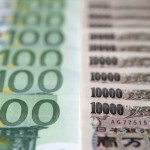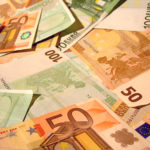On Wednesday the US dollar managed to gain some ground against the Japanese yen, following the release of a report to show Chinese manufacturing activity decelerated to 11-month low, which put selling pressure on the yen.
USD/JPY increased in value to hit a session high at 99.93 at 6:33 GMT, after which consolidation followed at 99.80. Support for the pair was likely to be found at July 23rd low, 99.13, while resistance was to be met at July 22nd high, 100.61.
Earlier on Wednesday HSBC Holdings Plc and Markit Economics reported that the preliminary value of the Purchasing Managers’ Index in Chinese sector of manufacturing decreased at a faster than expected rate to 47.7 during July, after showing a value of 48.2 a month ago, marking its lowest reading in 11 months. Experts had projected an increase to 48.6. Values below 50.0 are a sign that activity in the sector has shrunk.
“The Chinese numbers were on the soft side,” said Jeremy Stretch, head of currency strategy at Canadian Imperial Bank of Commerce in London, cited by Bloomberg. “Now the focus will be on the euro-region data, which are going to be pretty important because they are a good forward indicator of how the economy is doing.”, he also added.
The increase of the USD/JPY pair came after on Tuesday the greenback tumbled to one-week lows against the Japanese currency after recent weaker US housing data chilled expectations of the Federal Reserve Bank scaling back its bond purchases later in the year.
Meanwhile, also on Wednesday, it became clear that Japan recorded a 12th consecutive month of trade deficit in June, but however, this was the smallest deficit for the past year. In June it was 0.181 trillion JPY, which slightly exceeded preliminary estimates of a deficit of 0.153 trillion JPY. During the previous month the negative trade balance was considerably larger, 0.996 trillion JPY. In June Japanese export rose by 7.4% on annual basis, marking the fourth consecutive month of increase, after it climbed 10.1% in May. Import figure increased for the eighth month in a row, by 11.8% in June, following the 10.1% increase a month ago. This moderate rise in Japanese export came as a result of higher demand in the countries across the sea. Export towards the Euro zone countries rose by 8.6% in June, or the first month of increase for the past 21 months.
Elsewhere, the yen declined against the euro, as EUR/JPY cross soared 0.65%, trading at 132.37 at 8:17 GMT. Additionally, GBP/JPY pair advanced 0.53%, trading at 153.67 at 8:20 GMT.





